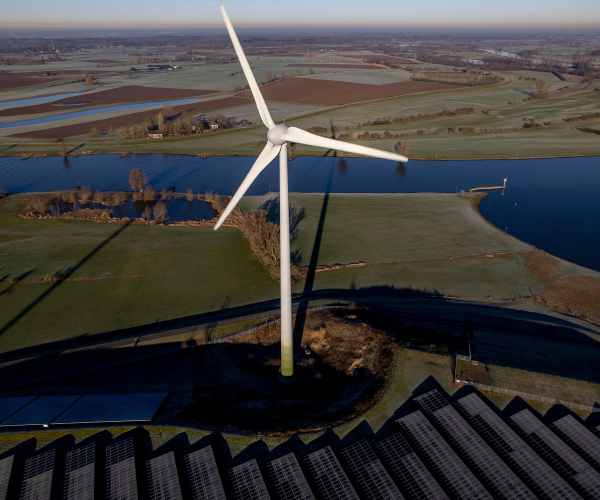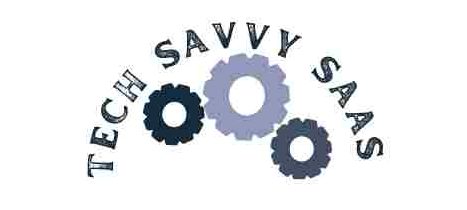The circular economy stands as a revolutionary approach to resource management, challenging the traditional linear model of production and consumption. In contrast to the “take, make, dispose” mindset of a linear economy, the circular economy emphasizes sustainability, aiming to minimize waste and extend the lifespan of products and materials. This introduction provides a brief overview of the circular economy and highlights its profound significance in waste reduction.
The circular economy is a holistic framework designed to rethink the entire lifecycle of products and materials. It revolves around the principles of minimizing waste, promoting durability, and fostering a regenerative approach to resource use. In essence, it encourages a closed-loop system where resources are continuously reused, recycled, and repurposed.

The Role of Technology in Sustainability
Integral to the success of the circular economy is the pivotal role played by technology. Advancements in technology have paved the way for innovative solutions that enhance the efficiency of resource utilization, waste reduction, and sustainable practices. From smart manufacturing processes to cutting-edge recycling technologies, the integration of technology is driving a transformative shift towards more environmentally friendly and socially responsible industrial practices.
Waste Management in the Industry
Waste management stands at the forefront of environmental stewardship within industries. Currently, a diverse array of waste management practices are employed across sectors, each with its own set of challenges and opportunities. From landfill disposal to recycling initiatives, understanding the existing landscape is crucial for identifying areas for improvement and innovation.
In the realm of waste management, industries must grapple with the ever-growing volume of waste generated by production processes, packaging, and end-of-life products. This section will delve into the intricacies of existing practices, shedding light on both successful models and areas that require intervention.
The Impact of Improper Waste Disposal
Improper waste disposal poses a significant threat to the environment, underscoring the urgency for change. Landfills, often the default destination for waste, contribute to soil and water pollution, emit harmful gases, and occupy valuable land. Incineration, another common practice, releases pollutants into the air.
The environmental impact extends beyond localized issues, affecting global ecosystems and contributing to climate change. The urgency to address these challenges becomes evident when considering the long-lasting repercussions of improper waste management. This section will provide a comprehensive overview of the environmental consequences, emphasizing the need for a paradigm shift.
Circular Economy Principles
In response to the pressing challenges posed by conventional waste management practices, the principles of the circular economy emerge as a promising solution. This approach advocates for a fundamental shift in the way industries approach resource utilization and waste generation. Rather than viewing waste as a problem to be managed, the circular economy considers it a potential resource.
The synergy between technology and the circular economy is transforming the landscape of waste reduction in various industries. This section will dissect how technology catalyzes positive change, driving innovation, efficiency, and sustainability. By understanding this intersection, industries can harness the power of technology to propel themselves towards circular practices.
Technologies and Innovations
At the heart of this transformation are key technologies and innovations that propel the circular economy forward. From IoT-enabled tracking systems to advanced recycling technologies, the spectrum of innovations is vast and impactful. This subsection will delve into specific technologies, elucidating their roles in waste reduction and circularity.
Case Studies of Tech Solutions
Real-world application is the litmus test for the effectiveness of technology in achieving sustainable practices. By exploring case studies of companies that have successfully implemented tech solutions, this section aims to provide tangible examples of how innovation can lead to tangible positive outcomes. These cases will showcase a variety of industries, illustrating the adaptability and scalability of tech-driven circular solutions.
Recycling and Materials Innovation
Recycling plays a pivotal role in the circular economy by reintegrating materials into the production cycle. This section will provide a comprehensive overview of the role of recycling, emphasizing its importance in waste reduction. From traditional recycling methods to advanced approaches, understanding the recycling landscape is crucial for fostering circular practices.
Innovations in Materials
Innovations in materials hold the key to creating a truly circular economy. This subsection will explore materials that contribute to circularity, such as bio-based materials, upcycled products, and recyclable alternatives. By adopting these innovations, industries can reduce their reliance on finite resources and contribute to a more sustainable and regenerative system.
Technology in Recycling Processes
The efficacy of recycling processes is greatly enhanced through the integration of technology. This part will investigate how technology improves recycling efficiency, from automated sorting systems to advanced waste-to-energy technologies. By leveraging technology in recycling, industries can streamline processes, reduce energy consumption, and increase the overall effectiveness of waste reduction efforts. The subsequent sections will delve into sustainable practices across various sectors, showcasing how technology and circular economy principles can be tailored to specific industries for maximum impact.
Sustainable Practices in Different Sectors
Sustainability is not a one-size-fits-all concept; it must be tailored to specific industries to maximize its impact. This section will highlight sustainable practices in various sectors, ranging from electronics and food to manufacturing. By examining industry-specific strategies, we can gain insights into how the principles of the circular economy are being applied and adapted across diverse sectors.
Incorporating Circular Economy Principles
The circular economy is a versatile framework that can be molded to fit the unique challenges of different sectors. In this subsection, we will delve into how different sectors are incorporating circular economy principles. Whether through closed-loop production systems, waste reduction initiatives, or innovative material sourcing, industries are finding creative ways to align their operations with circularity.
Case Studies of Leading Companies
Real-world examples serve as powerful inspiration and educational tools. By presenting case studies of companies leading in sustainable practices, this section aims to showcase successful implementations of circular economy principles. From large corporations to innovative startups, these cases will illustrate how sustainability and profitability can go hand in hand.
Impact of the Circular Economy on the Supply Chain
The reach of circular economy practices extends beyond individual companies to shape the entire supply chain. This section will scrutinize the impact of circular economy practices on the supply chain. By closing the loop on material flows and optimizing processes, industries can create a more resilient and sustainable supply chain ecosystem.
Technology for Optimizing the Supply Chain
Harnessing the full potential of the circular economy necessitates the strategic integration of technology into supply chain processes. This subsection will explore the role of technology in optimizing supply chain processes for sustainability. From blockchain for transparent product tracing to AI-driven demand forecasting, technology plays a pivotal role in enhancing the efficiency and sustainability of supply chains.
Examining the “Circular Supply Chain”
The concept of a “circular supply chain” involves more than just waste reduction; it entails rethinking the entire lifecycle of products. This part will delve into the intricacies of a circular supply chain, exploring how companies are closing loops, minimizing waste, and creating a sustainable flow of materials. By understanding this concept, industries can work towards a more circular and environmentally conscious future. The subsequent sections will explore the intersection of technology, the life cycle assessment, and the quick takeaways from our discussions.
Life Cycle Assessment (LCA)
Understanding and mitigating the environmental impact of products and processes is crucial for fostering sustainability. The Life Cycle Assessment (LCA) serves as a powerful tool in this endeavor. This section will provide a comprehensive introduction to LCA, shedding light on its methodology and its pivotal role in evaluating the full spectrum of environmental impacts associated with a product or process.
The Role of Technology in LCA
LCA becomes even more potent when coupled with technological advancements. This subsection will explore the integration of technology in conducting LCAs for products and processes. From data analytics to simulation tools, technology enhances the accuracy and efficiency of LCA, providing businesses with valuable insights into the environmental performance of their operations.
Case Studies of LCA Application
The real-world application of LCA is exemplified through case studies that showcase how industries are leveraging this methodology. These cases will illustrate the diverse ways in which LCA is applied, from assessing the environmental impact of materials to optimizing manufacturing processes. By examining these practical examples, readers can gain a deeper understanding of the tangible benefits that technology-enhanced LCA brings to the forefront of sustainable practices.
Quick Takeaways
In navigating the intricate landscape of the circular economy and its integration with technology, it is essential to distill key insights into actionable takeaways. This section aims to provide quick takeaways, summarize the critical points from our discussion, and emphasize the transformative role of technology in waste reduction.
- Circular Economy Integration: Embrace the principles of the circular economy, viewing waste not as a problem but as a potential resource. This paradigm shift fosters sustainable practices and aligns operations with a regenerative approach.
- Technology as a Catalyst: Recognize technology as a catalyst for positive change. From innovative recycling solutions to data-driven life cycle assessments, technology plays a pivotal role in optimizing processes, reducing waste, and fostering a more sustainable industrial landscape.
- Holistic Approach to Sustainability: Adopt a holistic approach to sustainability by incorporating circular economy principles into every aspect of the business, from production and supply chain management to waste disposal. This comprehensive strategy ensures a more resilient and environmentally conscious operation.
- Real-world Applications: Draw inspiration from real-world case studies showcasing successful implementations of circular economy practices. These examples demonstrate that sustainable practices are not only viable but can also enhance business efficiency and profitability.
- Continuous Innovation and Adaptation: Embrace a mindset of continuous innovation and adaptation. The landscape of sustainable practices and technology is ever-evolving; staying ahead requires a commitment to ongoing research, development, and implementation of cutting-edge solutions.
Emphasizing the Importance of Technology
Technology stands as a linchpin in the journey towards waste reduction and sustainable practices. The rapid evolution of technological solutions allows industries to reevaluate their processes, optimize resource utilization, and minimize environmental impact. In emphasizing the importance of technology:
- Efficiency Gains: Technology enhances efficiency in waste management, recycling processes, and supply chain operations. Adopting technological solutions not only reduces environmental impact but also improves operational efficiency.
- Innovation for Sustainability: Embrace innovation as a driving force for sustainability. Technologies such as IoT, AI, and advanced analytics enable industries to innovate and implement circular economy principles, contributing to a more sustainable and resilient future.
- Transparency and Traceability: Leverage technology to achieve transparency and traceability in supply chains. From raw material sourcing to end-of-life product disposal, technology provides tools for tracking and optimizing every stage of the value chain.
Encouraging Businesses to Adopt Circular Economy Practices
The adoption of circular economy practices is not merely an option; it is imperative for businesses striving for long-term success and environmental stewardship. In encouraging businesses to adopt circular economy practices:
- Strategic Alignment: Align business strategies with circular economy principles. Recognize that sustainability is not only a responsibility but a strategic advantage that can enhance brand reputation and customer loyalty.
- Collaboration and Partnerships: Foster collaboration and partnerships with stakeholders committed to sustainable practices. By working together, industries can amplify their impact and drive systemic change across the entire supply chain.
- Investment in Research and Development: Invest in research and development to explore innovative solutions. By prioritizing continuous improvement and staying abreast of emerging technologies, businesses can position themselves as leaders in sustainable practices.
- Employee and Consumer Engagement: Engage employees and consumers in the journey towards sustainability. By fostering a culture of environmental responsibility internally and communicating these efforts transparently to consumers, businesses can create a positive ripple effect in the wider community.
FAQs
How can technology contribute to reducing e-waste in the industry?
Answer: Technology contributes to reducing e-waste through initiatives like design for disassembly, recycling automation, and responsible disposal methods. Innovations such as modular components and efficient recycling processes enhance the lifecycle of electronic devices, minimizing their environmental impact.
What role do companies play in promoting circularity in the supply chain?
Answer: Companies play a crucial role by adopting circular economy principles in their supply chain strategies. This involves sustainable sourcing, reducing waste in manufacturing, and implementing circular supply chain practices. By prioritizing circularity, companies influence suppliers, partners, and consumers to embrace more sustainable practices.
How does the circular economy impact the production of plastic materials?
Answer: The circular economy transforms plastic production by promoting recycling, the use of recycled materials, and eco-friendly alternatives. It shifts the focus from single-use plastics to closed-loop systems, reducing the demand for new plastic production and mitigating the environmental impact of plastic waste.
What are the challenges of implementing circular economy practices in different sectors?
Answer: Challenges include resistance to change, initial investment costs, and adapting circular principles to diverse industries. Each sector has unique considerations, requiring tailored approaches. Overcoming these challenges involves fostering a cultural shift, investing in sustainable technologies, and collaborating with stakeholders.
How can consumers contribute to the circular economy in their daily lives?
Answer: Consumers contribute by adopting sustainable consumption habits. This includes choosing products with minimal packaging, supporting brands with circular initiatives, recycling responsibly, and participating in take-back programs. Consumer awareness and conscious choices drive demand for circular products, influencing industry practices.
Conclusion
In our exploration of the intersection between the circular economy and technology, it becomes evident that these two forces are integral to the future of waste reduction and sustainable practices in the industry.
The circular economy presents a paradigm shift from a linear, wasteful model to a regenerative, sustainable approach. By prioritizing resource efficiency, waste reduction, and circular practices, industries contribute not only to environmental conservation but also to long-term economic viability.
Technology emerges as a powerful enabler in this transition. From optimizing supply chains and manufacturing processes to driving innovation in recycling and materials, technology is at the forefront of sustainable practices. The examples highlighted in this blog post underscore the transformative potential that technology holds for reducing waste and advancing circularity.
As we conclude, it is crucial to emphasize the importance of continuous research and innovation. The landscape of sustainable practices and technology is dynamic, and businesses must remain proactive in exploring new solutions, refining existing processes, and staying ahead of emerging challenges.
More Post






